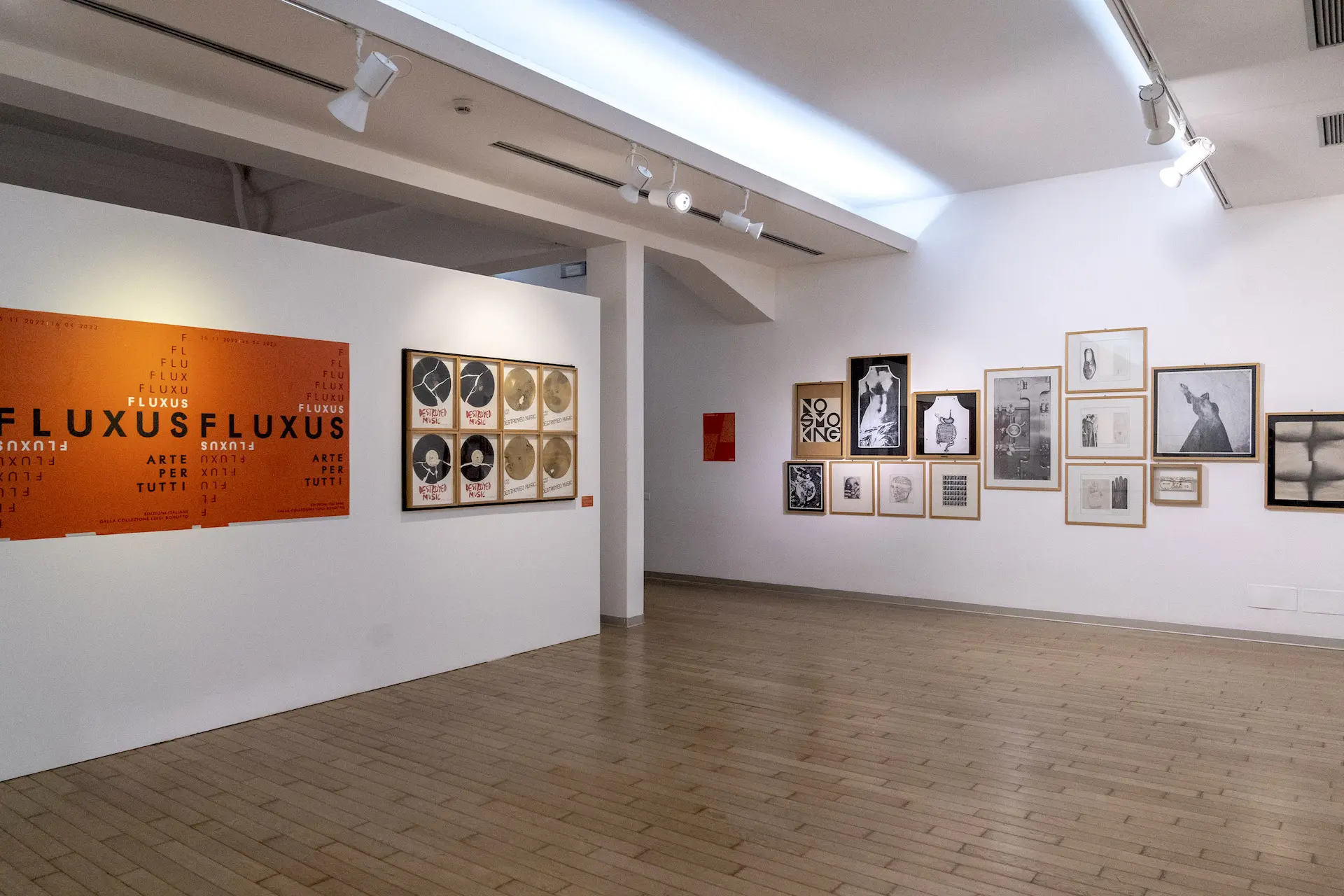Museum of the Twentieth Century. From Friday the exhibition "Fluxus, art for all" tells the key role of Italy in the movement
Museum of the Twentieth Century. From Friday the exhibition "Fluxus, art for all" tells the key role of Italy in the movement
Set up in the Archive spaces from 25 November to 16 April 2023, it is created in collaboration with the Luigi Bonotto Foundation - Photo gallery
Milan, November 24 2022 – From 25 November to 16 April 2023 the Museo del Novecento presents "Fluxus, art for everyone. Italian editions from the Luigi Bonotto collection" curated by Patrizio Peterlini and Martina Corgnati. The exhibition, scheduled in the Archives space, analyzes for the first time through publications, works and documents the key role of Italy in the context of Fluxus, sixty years after the "FLuXuS Internationale FesTsPiELe NEUEsTER MUSiK" Festival in Wiesbaden in September 1962.
Born between the end of the 1950s and the beginning of the 1960s thanks to the artist, architect and cultural organizer George Maciunas, Fluxus developed above all in the United States, Europe and Japan, and was at the center of an aesthetic and social revolution which aims to intertwine visual and performing arts, experimental music and theatre, also giving life to festivals, happenings and concerts with the desire to eliminate the division in the arts and, in general, that between existence and artistic creation.
Italy also participates to an important extent in the diffusion of Fluxus, in particular with significant experiences in the production of "editions": objects, graphics folders, artists' books in various copies. These works are created by patrons and cultural operators together with the protagonists of the movement, such as Eric Andersen, Joseph Beuys, George Brecht, Giuseppe Chiari, Philip Corner, Geoffrey Hendricks, Allan Kaprow, George Maciunas, Nam June Paik, Ben Patterson, Dieter Roth, Wolf Vostell, Bob Watts and many others.
The creation of editions plays an essential role in the systematic diffusion of the movement, a strategic choice which identifies as its strengths low production costs, ease of distribution (even by post) and accessibility to the general public thanks to economical prices. Characteristics that fully respond to the idea of democratization of art pursued by Fluxus. It is in fact in the second manifesto of 1963 that Maciunas speaks of a Revolutionary Flood that would make art accessible and comprehensible to all, with a direct and unmediated attack on the market system.
The idea of the flood is embodied in the small editions that characterize Fluxus production: a myriad of small objects which, like water, can arrive anywhere, bringing with them the new aesthetic vision of the world.
The multiples and numerous editions on display, coming from the Luigi Bonotto Collection, explore and deepen the radical change that the diffusion of editions brings to the enjoyment of the work of art in the Fluxus world and its admirers.
From an elite object, intended for a few users of a small circle of wealthy connoisseurs, the work becomes a cheap object, accessible and purchasable by anyone, often accompanied by an "instruction manual" for an action to be carried out at home . This further step towards the de-construction of the art world has had and continues to have repercussions that are still difficult to investigate. In fact, not only can any object be elevated to art, but anyone can make this transition, without necessarily needing official recognition.
On display are editions by: Eric Andersen, Ay-O, Joseph Beuys, George Brecht, John Cage, Giuseppe Chiari, Philip Corner, Willem De Ridder, Jean Dupuy, Robert Filliou, Albert M. Fine, Henry Flynt, Ken Friedman, Al Hansen, Geoffrey Hendricks, Dick Higgins, Joe Jones, Allan Kaprow, Milan Knizak, Alison Knowles, Jackson Mac Low, George Maciunas, Walter Marchetti, Jonas Mekas, Larry Miller, Charlotte Moorman, Claes Oldenburg, Yoko Ono, Nam June Paik, Ben Patterson, Dieter Roth, Takako Saito, Tomas Schmit, Carolee Schneemann, Mieko Shiomi, Gianni-Emilio Simonetti, Daniel Spoerri, Ben Vautier, Wolf Vostell, Robert Watts, Emmett Williams and others.
Since the beginning of the Seventies, the Bonotto Collection has collected numerous testimonies including works, audio documentation, videos, posters, books, magazines and editions of Fluxus artists and of the international verbo-visual research developed since the end of the Fifties: Lettrism, concrete poetry, visual poetry, sound poetry and digital poetry. The entire collection (works and documents) can be entirely and freely consulted online on the company website Bonotto Foundation which, thanks to the enormous work of connections developed between the various boards, has become an important reference point at an international level for deepening the knowledge of Fluxus and concrete, visual, sound and digital poetry.

Updated: 24/11/2022
